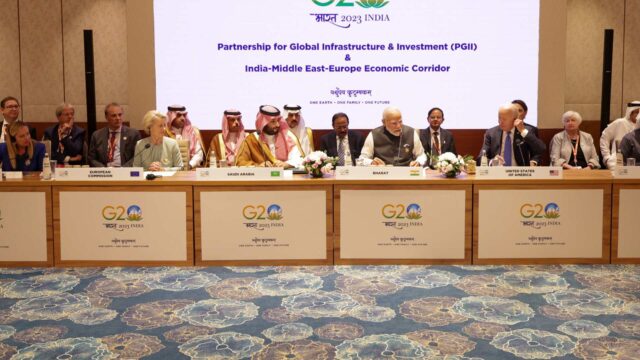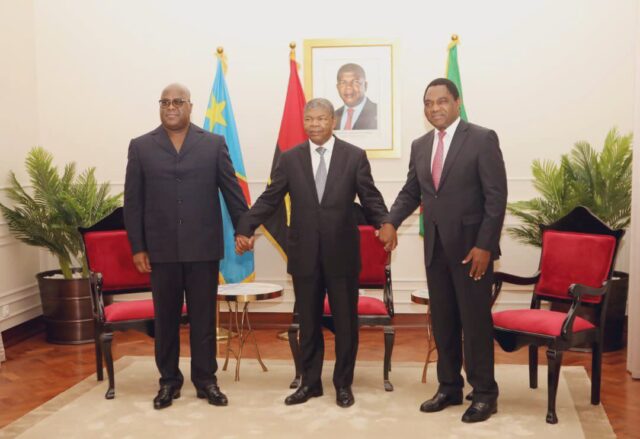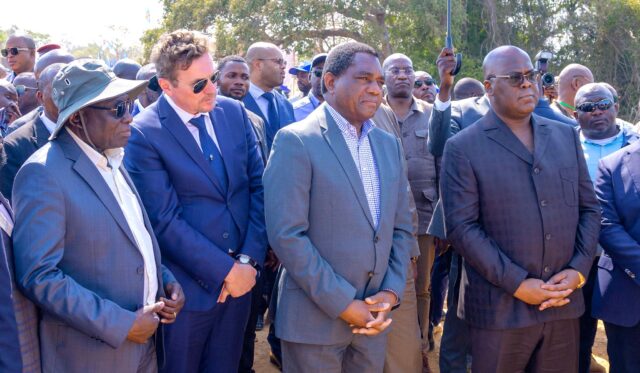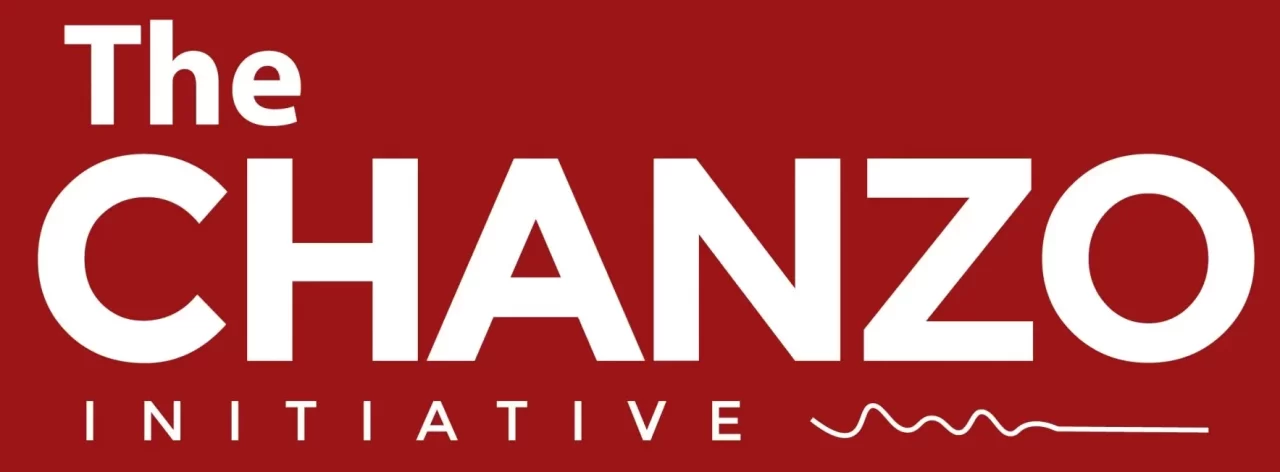Dar es Salaam. Tanzania risks facing stiffer competition from the Lobito Corridor, a transregional infrastructure project connecting southern DRC and northwestern Zambia to global trade markets via Angola’s port of Lobito, which has recently been garnering notable attention, analysts told The Chanzo.
Already, the European Union and the United States have enthusiastically endorsed the project, which leverages the existing Benguela rail network in Angola and connects the mineral-rich Congo Katanga province, hailing it as a strategic investment venture for both parties, with the US President Joe Biden describing it as a “game-changing regional investment.”

This development coincides with Tanzania’s ambitious US$10 billion Standard Gauge Railway (SGR) initiative, which the East African nation banks on to help the country secure more business opportunities for its ports from Rwanda, Burundi, Uganda, and the Democratic Republic of Congo (DRC).
Reports on the development of the Lobito Corridor also come at a time when Tanzania is actively investing in its port operations to capture more market in areas where it has significant business, such as Zambia and Malawi, signified by the recent Tanzania-Dubai intergovernmental agreement that would allow an Emirati logistics company DP World to take over some operations at the Dar es Salaam port.
Mr Elias Lukumay is the Chairperson of the Tanzania Truck Owners Association (TATOA) who told The Chanzo during an interview recently that Tanzania can ignore the development at its own risk, noting that the prospects should force Tanzania to “up its game” on logistical issues.
“We cannot pretend that we have not heard the reports [on the development of the Lobito Corridor],” Mr Lukumay opened up during his conversation with this writer. “There’s undoubtedly going to be stiffer opposition. [The reports] should be a wake-up call on the urgent need to improve efficiency.”
READ MORE: Inside the Tanzania’s USD 10.04 Billion Railway
Neither Minister of Transport Prof Makame Mbarawa nor the Director General of the Tanzania Ports Authority (TPA), Mr Plasduce Mbossa, responded when The Chanzo asked for their comments on the Lobito Corridor and the competition it poses.
Catching-up
By committing to proceed with the Lobito Corridor, Angola seems to have resolved to catch up with its 21-year-old unfulfilled dream of revamping its infrastructure and utilising its strategic position when its ravaging Civil War ended in 2002, which prevented the country for years from enjoying its competitive advantages.
Colonial government sabotage and Angola Civil War pushed Zambia to construct and fully rely on the Tanzania-Zambia Railway avoiding Beira ports and Lobito ports, which both were controlled, directly or indirectly, by the colonial government and the white-controlled South Rhodesia, which stopped at nothing to sabotage the Zambia copper trade.
The war also lost Angola some businesses from the DRC, which, just like Zambia, shifted their businesses to Tanzania, Mozambique (Beira), and South Africa (Durban). But the war is history, and Angola appears determined to recoup the lost opportunities.
On January 25, 2023, Angola, Zambia, and DRC signed the Lobito Corridor Transit Transport Facilitation Agency Agreement. On July 4, 2023, Angola signed a 30-year concession agreement with a consortium of three multinational companies for railway operations, management, and maintenance along the Lobito Corridor.

Members of the consortium include the Singapore-based commodity trader Trafigura (49.5 per cent), a Portuguese civil construction group Monta-Engil (49.5 per cent), and a European railway operator Vecturius (one per cent). Heads of State from Angola, Zambia and DRC attended the signing ceremony, signalling their commitment to the project.
The consortium has committed to investing US$455 million in the Angola side and about US$100 million in DRC. On its part, the US government, through its Development Finance Corporation (DFC), has committed about US$250 million to the corridor.
Observers think that it is thanks to this backing from the US and the EU that the project has started to gain momentum; this includes Mr Edward Musosa, the Head of Programmes at the Civil Society for Poverty Reduction (CSPR) in Zambia, who made the observation recently to The Chanzo.
“The [Lobito] Corridor has been among the different corridors since [Zambia] had [its] Seventh National Plan,” Mr Musosa observed during the just-concluded 2023 International Transparency and Accountability Conference (ITAC) in Arusha “It’s only that now there is a built-up momentum and increased support from the European Union and the US government.”
Stiffer competition
Analysts told The Chanzo that the development of the Lobito Corridor would pose a “stiffer competition” to Tanzania, whose ports have been accused of long delays and bottlenecks, irking transporters and other key stakeholders in the sector.
Zambia and DRC remain Tanzania’s biggest clients. In 2022, about 3.3 million tonnes of goods for DRC passed through Tanzania’s ports, representing about 12 per cent of the total consignment. For Zambia, it’s about 1.9 million tonnes, representing about seven per cent of the total consignment.
READ MORE: New EU-funded Initiative to Promote Trade, Investment for East African Small Businesses
The year 2022 also registered an increase of Congolese and Zambian goods through Tanzania by 43 per cent and 31 per cent, respectively. In the past five years, Tanzania has invested about US$421 million in its ports to improve Tanzania’s competitive edge in the field.
This is not to mention the ambitious US$10 billion SGR project that will see the country serving resource-rich areas of Msongati in Burundi, Rwanda, Uganda, and DRC Congo through Lake Tanganyika.
While confident that the Lobito Corridor will compete with Tanzania, TATOA’s Lukumay admits that the project is not simple, highlighting security challenges in the area and the difficult geography, especially the thick forest across the project.
“What traders want is the assurance that their consignment will reach their destinations safely,” Mr Lukumay noted, “and Tanzania’s political stability offers just that.”
Commendable
Salum Awadh is a corporate advisor and investment banker with ten years of industry experience who also advises on logistical issues. In an interview with The Chanzo, Mr Awadh commended the Lobito Corridor project, saying it is good for the entire continent, especially in the African Continental Free Trade Area (AfCFTA) context.
READ MORE: Former CAG Assad Weighs In On DP World Deal: ‘Long Overdue’
Poised to lift over 30 million African people out of poverty, the AfCFTA seeks to create a single continental market with a population of about 1.3 billion people and a combined GDP of approximately US$3.4 trillion.
Mr Awadh notes that intra-continental trade is the lowest in Africa, standing at just 12 per cent, compared to all other continents, and poor infrastructure has been the main impediment.
“When we see these port developments, we should praise the efforts, regardless of where it is happening in Africa,” he said, “from the Atlantic to the Indian Ocean, from the Mediterranean to the Red Sea.”
The competition posed by the Lobito Corridor notwithstanding, Tanzania still remains DRC’s and Zambia’s important logistical partner as demonstrated by the October 2, 2023, inauguration of of the Kasomeno-Kasenga-Chalwe-Kabila-Mwenda road, a US$850 million project undertaken in a public-private-partnership mechanism involving a private company GED Africa and Duna Aszfalt.
The road, which includes the construction of the 345-metre bridge over the Luapula River, a river between DRC Congo and Zambia, is expected to shorten the route to Tanzania’s Tunduma border, making it the fastest route from DRC Congo to Dar es Salaam.






3 Responses
I think this is good news for the region. It should not be seen as an obstacle to Tanzania tapping into the potential and existing market opportunities in DRC, Zambia and elsewhere. The government of Tanzania should seriously start upping its game by taming corruption, incompetency and sycophancy. if we can not get our act together by installing in place a system of government that ensures accountability, rule of law and good governance, there is little we can do to stop those countries from ditching us.
Tanzania should make sure they improve their port operations ASAP. Serious port policy must be put in place and fully implemented.
Certainly great news . We need to seriously embrace the AfCFTA and here is one great opportunity. We should stop this trend of fear and Pan African disunity and inward looking at full speed embrace the AfCFTA.